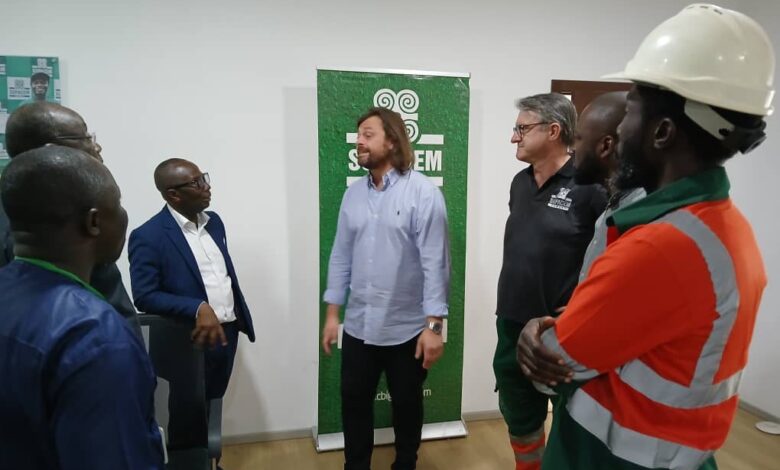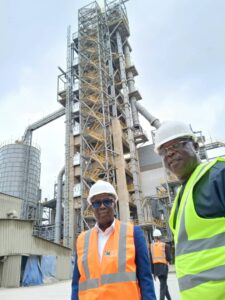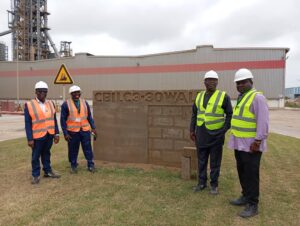Finance
IET-GH Leadership Tours CBI Ghana to Explore Groundbreaking LC3 Cement Innovation

On April 23, 2025, a high-level delegation from the Institution of Engineering and Technology, Ghana (IET-GH), led by its President, Engr. Henry Kwadwo Boateng, paid an official visit to CBI Ghana Limited. The visit aimed to deepen collaboration and gain firsthand insights into the company’s operations, particularly its newly inaugurated Limestone Calcined Clay Cement (LC3) production plant and cutting-edge laboratory facilities.
A Bold Step Towards Sustainable Construction
During the visit, IET-GH engaged in fruitful discussions with CBI Supercem’s management team, delving into the strategic intent behind the company’s $100 million investment in LC3 technology. CBI Ghana’s Managing Director, Frederick Albrecht, emphasized the firm’s commitment to environmental sustainability, highlighting that Ghana is the leading clinker importer in the West African sub-region. He explained that by using local materials in LC3 production, the company significantly lowers its carbon footprint while stimulating job creation across the supply chain.
Present at the meeting were Peter Dickson (Quality and Process), Kobby Adams (Commercial Director), Remi Touvet (Industrial Director), Engr. Seth Ayim (Executive Director), Engr. Wonder Salami Davor (President-Elect), Engr. Mark Nyameche, and other key stakeholders.

Commendation from IET-GH
Engr. Boateng applauded CBI Ghana for its forward-thinking approach and technological innovation in the cement industry. He also expressed strong support for Supacem 32.5N, a premium cement product made using LC3 technology, noting its potential to transform Ghana’s construction landscape.
LC3: Cementing a Greener Future
Limestone Calcined Clay Cement (LC3), often referred to as “green cement,” is a revolutionary alternative to traditional Portland cement. It is made from clinker, calcined clay, limestone, and gypsum—delivering performance comparable to Ordinary Portland Cement while reducing clinker use by up to 40%. LC3 offers improved durability and a substantial reduction in CO2 emissions.

Environmental and Economic Benefits
The adoption of LC3 in Ghana is expected to yield significant gains:
Annual CO2 emissions reduction of up to 360,000 tons
Creation of jobs in Tema and Torgorme
400,000 tonnes cut in clinker imports
Local sourcing of raw materials to strengthen the economy
Decrease in maritime emissions by 60,000 tonnes annually
Increased cost stability against currency and freight volatility
Pioneering Global Standards
Ghana made history in 2024 by becoming the first nation to formalize an LC3 standard, allowing cement products with at least 35% clinker. This landmark achievement enables CO2 savings of up to 200 kg per tonne of cement and has spurred similar regulatory efforts in Togo, Kenya, Tanzania, Rwanda, Uganda, and South Sudan.
Research-Driven Innovation
CBI’s LC3 initiative is backed by a global research network involving 11 laboratories, including Ghana’s KNUST, the University of Ghana, and BRRI, along with academic institutions in Germany, Austria, and Australia.
The official launch of Supacem LC3 in April 2025 marks a significant milestone in Ghana’s journey toward sustainable, locally-produced building materials—setting a new standard for the region and beyond.





